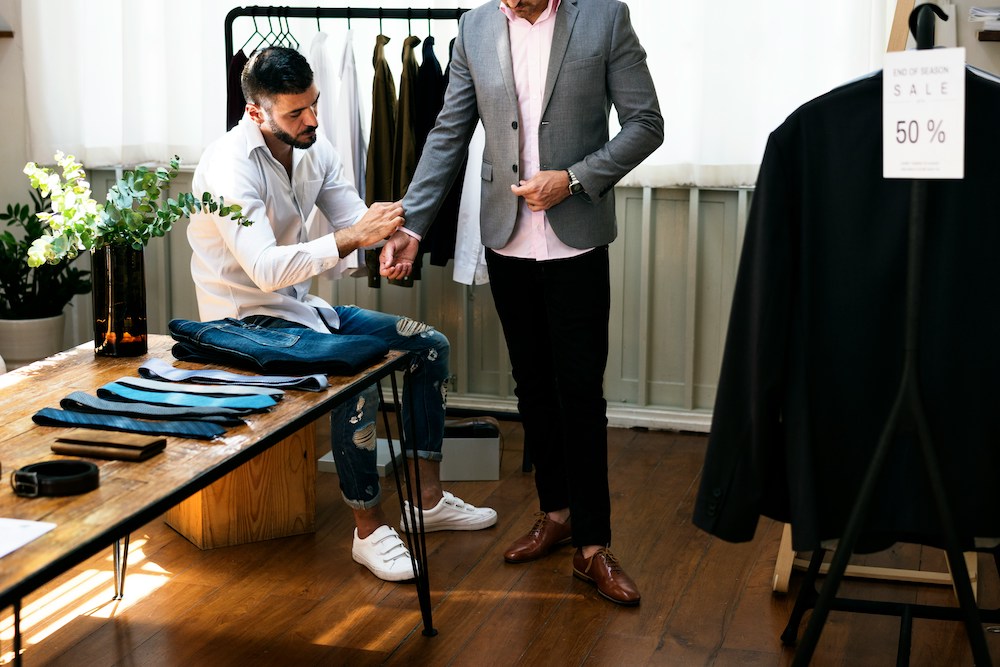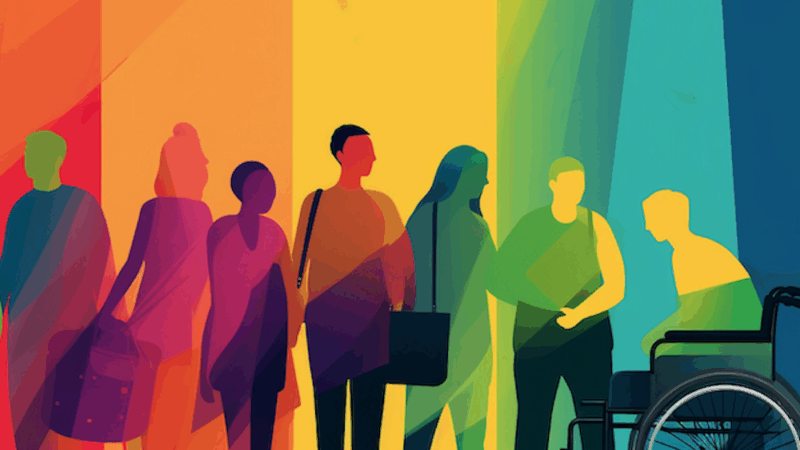Today’s workforce leans casual, but events demand clarity—a smart dress code sets expectations, smooths cross-cultural interactions, and helps attendees focus on business
If you plan meetings, you already manage a hundred tiny levers that shape attendee experience—room sets, AV, flow, wayfinding, F&B. Dress codes are one more lever. Done well, they enhance professionalism, comfort, and culture; done poorly, they confuse, exclude, or clash with global expectations.
In North America, the shift toward casual dress was accelerated by two forces: generational change and COVID. Younger employees increasingly value autonomy, authenticity, and comfort, while the pandemic blurred the lines between home and workwear. According to Mployer Advisor, a job search site, the share of U.S. job postings highlighting casual attire jumped from 60% to nearly 80% between 2019 and 2022. But as noted by Central College research on perceptions of business attire, casual norms can create confusion and occasionally undermine professionalism. The workforce now needs a gentle nudge back toward the more formal end of the scale—especially at in-person events where image, respect, and first impressions still matter.
The Case for Dress Codes
Attire is a fast, nonverbal signal. Classic business dress (suits, tailored dresses) reliably projects authority, credibility, and respect—especially in high-stakes contexts and with senior or traditional stakeholders. As noted by Oberwerth research on dress codes and perceptions of competence, people form impressions within seconds based on appearance, and over 80% of respondents in one study rated individuals in elegant clothing as more competent than those dressed casually.
Formal attire can also prime behavior. Research by The Atlantic suggests that wearing suits or tailored dresses encourages abstract, strategic thinking, while companies that mandate formal wear often believe the ritual itself puts employees into “professional mode.” On the other hand, casual attire has real benefits too: Central College surveys found employees reported higher morale and productivity in relaxed dress environments, and workspace design firm, BE Offices noted that casual codes boost approachability and creativity.
The Balance: Context, Comfort & Clarity
Think of dress codes as situational, not absolute. Most events benefit from a hybrid approach: a polished baseline that makes networking easy and photos look great, with targeted “dress-up moments” (keynotes, awards, investor sessions) and “dress-down moments” (long expo days, site tours).
When to lean more formal
1. Executive meetings, investor sessions, board presentations. Stakes are high; formality signals respect and readiness.
2. Industries with conservative norms (finance, law, government).
3. Cross-cultural moments with international guests who expect more formality.
When to lean business-casual
1. Conference daytimes and expo floors. Comfort drives stamina; approachable polish drives conversations.
2. Creative, tech, and startup communities where informal norms prevail.
3. Hands-on sessions or site visits where mobility and weather matter.
5 Principles For a Modern, Flexible Policy
1. Lead with purpose. Explain why the code exists (professional photos, sponsor standards, safety, cultural respect).
2. Define outcomes, then examples. Say what the look should communicate, then give concrete options.
3. Name the “no’s” simply. A short list—flip-flops, gym wear, offensive graphics—eliminates gray areas.
4. Build for global audiences. Offer options that accommodate modesty norms and flag “dress-up” moments early so international attendees can pack correctly.
5. Design for the agenda. Map dress to the program: “conference daytime,” “expo floor,” “evening reception,” “gala.”
The Baseline Framework For a Dress Code
Business Professional (Formal): Suit or tailored separates; tie optional as specified; dress or pantsuit; closed-toe shoes.
Business Casual (Polished): Collared shirt or blouse; blazer optional; chinos or tailored trousers/skirt; clean, minimal shoes.
Functional Casual (Site/Expo): Branded polos, neat denim or technical pants, comfortable closed-toe shoes; safety gear if required.
Not appropriate: Gym or beach wear, distressed denim, flip-flops, offensive slogans, overly revealing items.
Who’s Meeting Who
Once you have a baseline set, then filter it through the type of event being hosted. Each meeting has it’s own fashion rules for what’s appropriate.
Trade shows: attire as branding. At trade shows, booth staff attire essentially becomes part of the brand. According to Exponents trade show research, nothing undermines a booth faster than poorly dressed representatives. A polished, consistent look—whether logo polos with khakis or coordinated suits—creates a visual identity that attracts attendees. The choice should balance comfort (long days on your feet) with professionalism. A startup in Silicon Valley might look right in matching T-shirts and sneakers, but a financial services exhibitor will almost always be in suits.
Conferences: versatility wins. Most North American conferences default to business casual during daytime sessions. According to Crestline and the Emily Post Institute, guidance, collared shirts, blouses, tailored trousers, or modest skirts paired with comfortable shoes are the safest bet. Presenters often elevate one notch—adding a blazer or jacket—while evening receptions or gala dinners may require cocktail attire. The key is flexibility: seasoned attendees plan outfits that can be dressed up or down with a single layer.
Corporate meetings: step it up for clients. Internal team meetings may be casual, but external-facing sessions call for polish. As noted by BE Offices, even staff in casual workplaces “make extra effort on days they’re expecting to meet clients.” Jackets, ties, and tailored dresses reassure clients of competence and respect. For board meetings and negotiations, overdressing slightly is safer than showing up underdressed.
International considerations: fashion diplomacy. North American casual norms don’t always translate. In the UK and much of northern Europe, dark suits remain standard; in Japan, conservative business attire signals respect; in parts of the Middle East, lightweight suits are expected even in hot climates. According to Oberwerth’s international etiquette guide, it’s better to err slightly formal than risk appearing disrespectful.
Conversely, an overdressed international guest may feel awkward at a casual North American conference. As one the World Trade Center Manila advisory notes, the best solution is clear communication: provide dress code guidance in advance, with examples and “dress-up moments” called out. This prevents embarrassment and shows cultural sensitivity.
Rolling It Out
Once you settle on a policy, you have to communicate it to the attendee base. The tone should be firm but tactful. Here are some general guidelines to follow:
Keep it simple. One page: purpose, categories, not allowed, agenda-based exceptions.
Repeat it in three places. Registration site, “Know Before You Go,” and mobile app.
Show, don’t tell. Visual grids of acceptable outfits eliminate guesswork.
Name a contact. “Questions? Ask our Dress Code Concierge.”
Model it. When you get on site lead by example. All staff should embody the code.
Final Thought: Be Flexible But Have a Spine
Generational change and pandemic-era habits have made North American workplaces far more casual. That comfort has real benefits, but without guidance it risks sliding into sloppiness. As planners, your job is to strike balance: relaxed enough for creativity and comfort, formal enough for respect and professionalism.
The solution isn’t rigid uniforms, but clear, flexible frameworks tied to the agenda. As Event Comms Agency advises, “Provide clear dress code expectations for your event well in advance.” Attendees appreciate clarity, and sponsors, clients, and international guests appreciate polish.
The takeaway? A good dress code doesn’t restrict—it liberates. By removing uncertainty, you allow people to focus on connecting, learning, and doing business. When in doubt, remind attendees of the universal rule: polished, comfortable, and respectful of the moment.
Any thoughts, opinions, or news? Please share them with me at vince@meetingsevents.com.
Photo by Curated Lifestyle For Unsplash+





